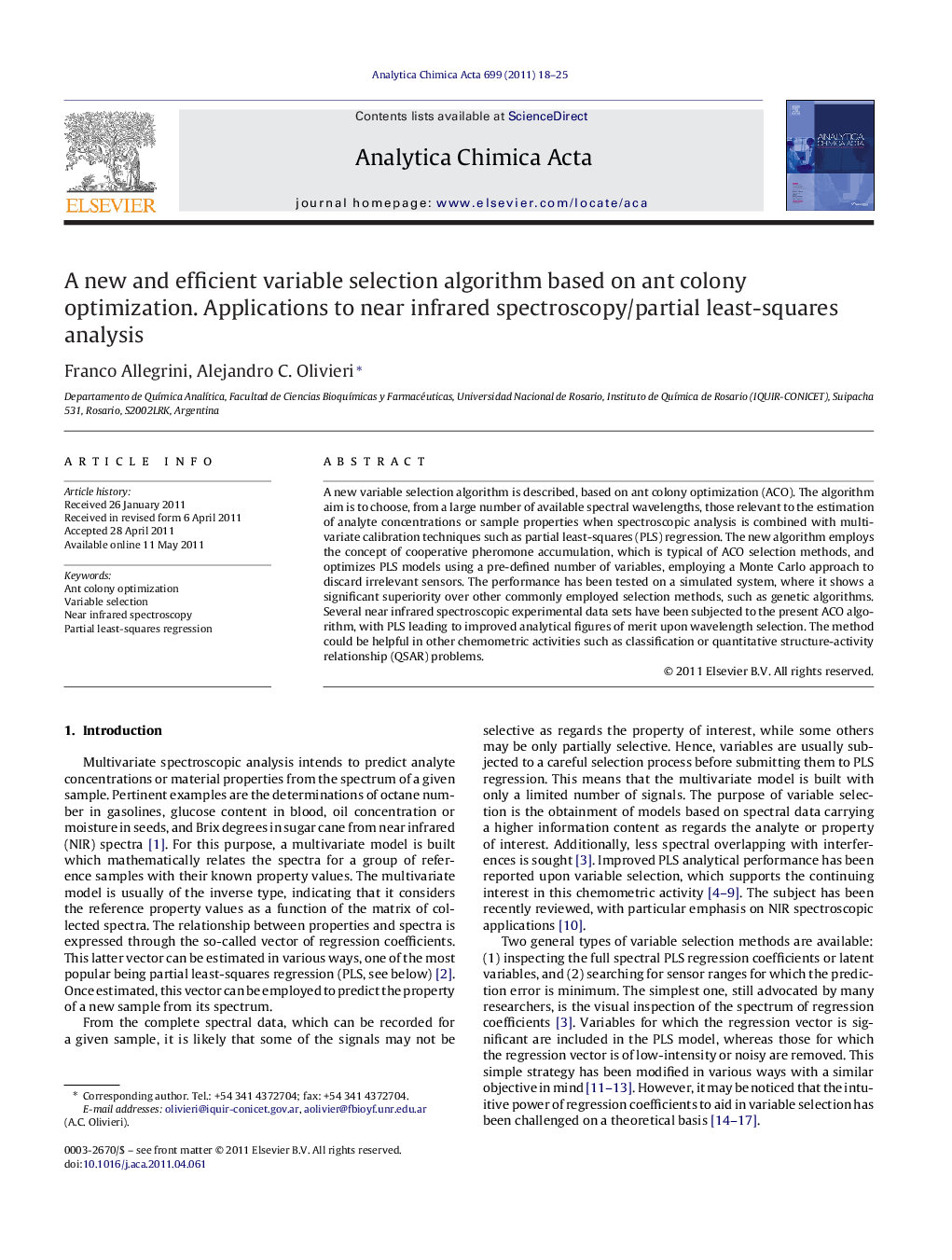| Article ID | Journal | Published Year | Pages | File Type |
|---|---|---|---|---|
| 1166845 | Analytica Chimica Acta | 2011 | 8 Pages |
A new variable selection algorithm is described, based on ant colony optimization (ACO). The algorithm aim is to choose, from a large number of available spectral wavelengths, those relevant to the estimation of analyte concentrations or sample properties when spectroscopic analysis is combined with multivariate calibration techniques such as partial least-squares (PLS) regression. The new algorithm employs the concept of cooperative pheromone accumulation, which is typical of ACO selection methods, and optimizes PLS models using a pre-defined number of variables, employing a Monte Carlo approach to discard irrelevant sensors. The performance has been tested on a simulated system, where it shows a significant superiority over other commonly employed selection methods, such as genetic algorithms. Several near infrared spectroscopic experimental data sets have been subjected to the present ACO algorithm, with PLS leading to improved analytical figures of merit upon wavelength selection. The method could be helpful in other chemometric activities such as classification or quantitative structure-activity relationship (QSAR) problems.
Graphical abstractFigure optionsDownload full-size imageDownload as PowerPoint slideHighlights► We developed a new variable selection algorithm combining ant colony optimization with a Monte Carlo approach. ► We applied it to PLS regression analysis of near infrared spectroscopic experimental data. ► Improved analytical figures were obtained upon wavelength selection.
